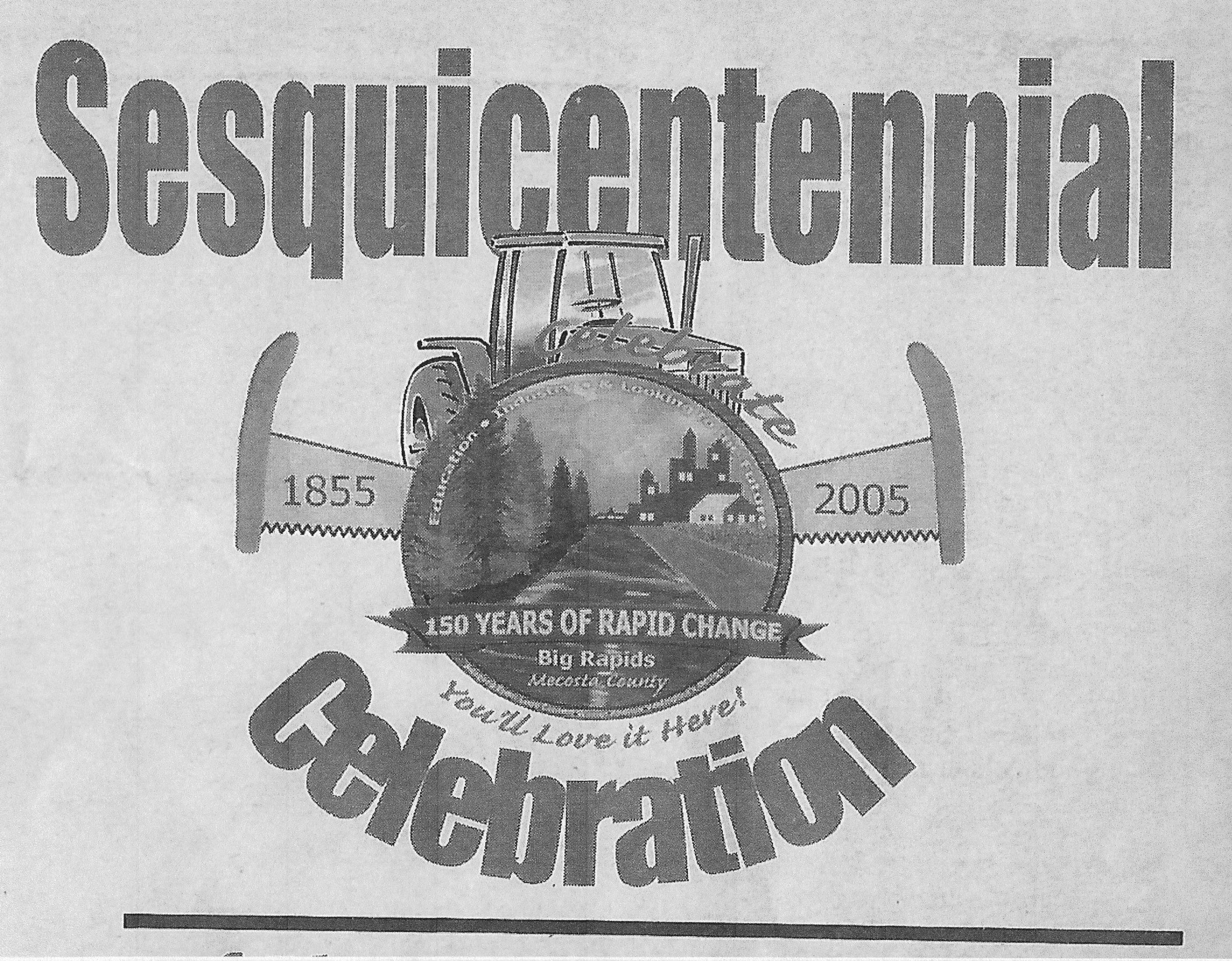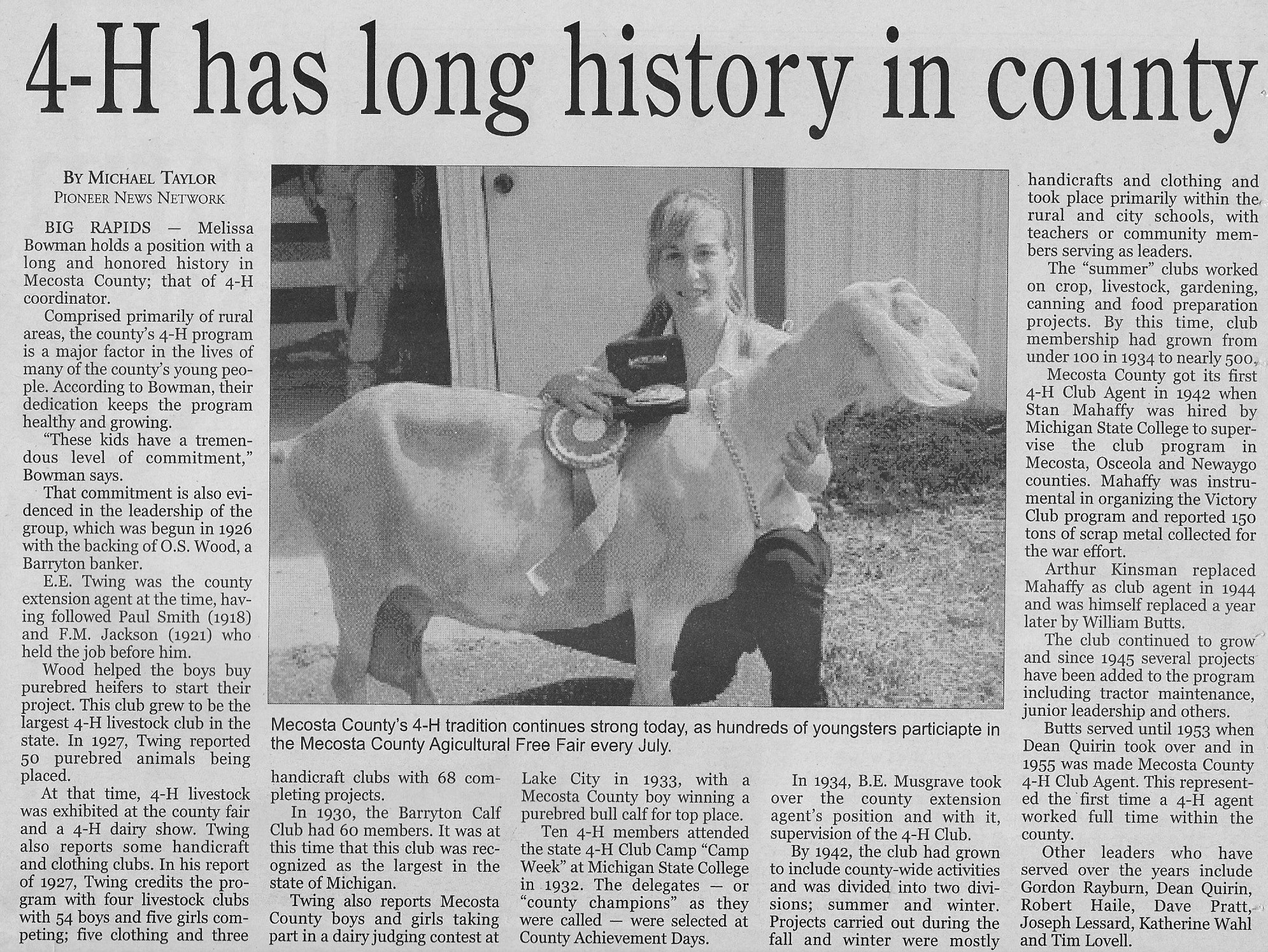
Part I - Agriculture, a supplement to the Big Rapids Pioneer Newspaper. Used with permission.

4-H HAS A LONG HISTORY IN COUNTY
By Michael Taylor, Pioneer News Network
Melissa Bowman holds a position with a long and honored history in Mecosta County; that of 4-H coordinator.
Comprised primarily of rural areas, the county's 4-H program is a major factor in the lives of many of the county's young people. According to Bowman, their dedication keeps the program healthy and growing.
"These kids have a tremendous level of commitment," Bowman says.
The commitment is also evident in the leadership of the group, which was begun in 1926 with the backing of O.S. Wood, a Barryton banker.
E.E. Twing was the county extension agent at the time, having followed Paul Smith (1918) and F. M. Jackson (1921) who held the job before him.
Wood helped the boys buy purebred heifers to start their project. The club grew to be the largest 4-H livestock club in the state. In 1927, Twing reported 50 purebred animals being placed.
At that time, 4-H livestock was exhibited at the county fair and 4-H dairy show. Twing also reports some handicraft and clothing clubs. In his report of 1927, Twing credits the program with four livestock clubs with 54 boys and five girls competing; five clothing and three handicraft clubs with 68 completing projects.
In 1930, the Barryton Calf Club had 60 members. It was at this time that this club was recognized as the largest in the state of Michigan.
Twing also reports Mecosta County boys and girls taking part in a dairy judging contest at Lake City i 1933, with a Mecosta County boy winning a purebred bull calf for top place.
Ten 4-H members attended the state 4-H Club Camp "Camp Week" at Michigan State College in 1932. The delegates - or "county champions" as they were called - were selected at County Achievement Days.
In 1934, B. E. Musgrave took over the county extension agents position and with it supervision of the 4-H Club.
In 1942, the club had grown to include county-wide activities and was divided into two divisions; summer and winter. Projects carried out during the fall and winter was mostly handicrafts and clothing and took place primarily within the rural and city schools, with teachers or community members serving as leaders.
The "summer" clubs worked on crop, livestock, gardening, canning and food preparation projects. By this time, club membership had grown from under 100 in 1934 to nearly 500.
Mecosta County got its first 4-H Agent in 1942 when Stan Mahaffy was hired by Michigan State College to supervise the club program in Mecosta, Osceola and Newaygo Counties. Mahaffy was instrumental in organizing the Victory Club program aaand reported 150 tons of scrap metal collected for the war effort.
Arthur Kinsman replaced Mahaffy as club agent in 1944 and was himself replaced a year later by William Butts.
The club continued to grow and since 1945 several projects have been added to the program including tractor maintenance, junior leadership and others.
Butts served until 1953 when Dean Quirin took over and in 1955 was made Mecosta County 4-H Club Agent. This represented the first time a 4-H agent worked full time within the county.
Other leaders who have served over the years include Gordon Rayburn, Dean Quiren, Robert Haile, Dave Pratt, Joseph Lessard, Katherine Wahl and Tim Lovell.
Return to Home Page


